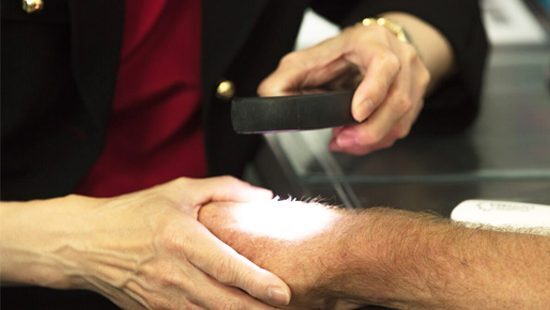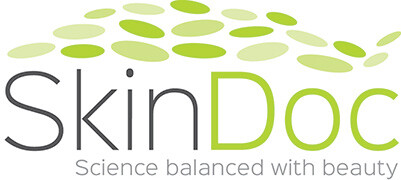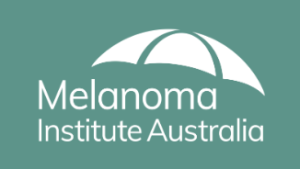Melanoma is the least common but the most aggressive of all skin cancers. It makes up about 2% of all skin cancers seen in Australia but causes 75% of skin cancer deaths. It is the 3rd most common cancer in Australian men after prostate and colon cancer. It accounts for 12% of all new cancers diagnosed in men in 2017 (estimated).
Melanoma is the 3rd most common cancer in Australian women after breast and colon cancer. It accounts for 9% of all new cancers diagnosed in women in 2017 (estimated).
Australia and New Zealand have the highest melanoma rates in the world. Queensland has the highest incidence rate of 71 cases per 100 000 people (2009-2013). Melanoma rates doubled in the 20 years from 1986 to 2006 and are still rising.
Melanoma is the most aggressive skin cancer and potentially fatal. The estimated number of new cases of melanoma for 2017 is 13941 (8392 males and 5549 females). The estimated number of deaths from melanoma in 2017 is 1839 (1280 males and 559 females). Melanoma is the 4th commonest cancer in Australia behind breast, colorectal and lung cancer – according to the Australian Institute for Health and Welfare.
In 2016, it is estimated that the risk of an individual diagnosed with melanoma by their 85th birthday will be 1 in 18 (1 in 14 in males and 1 in 23 in females). Further information can be found at www.melanoma.cancerasutralia.gov.au/statistics.
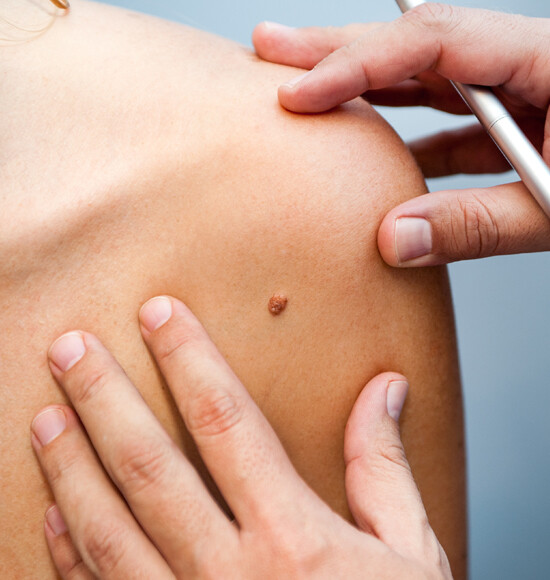
More about Melanoma…
Melanoma develops in the pigment cells in the skin called melanocytes. However, they can occur in the eye or mucosa (the moist tissue that line certain parts of the body and organs. Melanoma can occur anywhere in the body where there are melanocytes.
Melanoma is the most common cancer in young Australians aged 15-39 years old. Melanomas in this age group make up 20% of all cancers. It is estimated that 2 500 Australians aged 25-49 years will be diagnosed with melanoma in 2017. Melanoma kills more young Australians aged 20-39 years than any other single cancer.
In 2017, more than 1800 Australians are expected to die from melanoma, that is five people each day. One person every five hours die from melanoma in Australia. While 90% of people with melanoma can be cured by having the primary melanoma removed through surgery, the remaining 10% of cases, life threatening spread will have already occurred. There is a 90% chance of surviving at least 5 years with melanoma.
Melanomas can start from a pre-existing mole or can appear on normal skin. A careful check of your skin will determine whether any pigmented or non-pigmented spot is suspicious and needs further investigations. We recommend you consult your GP promptly if you feel any spot is abnormal. Your GP will decide if you need a referral to see a dermatologist.
We strongly recommend that you adhere to the ‘slip, slop, slap’ regime when outdoors to minimise your risk of developing skin cancers in general.
Warning signs of a melanoma ABCDE
- Asymmetry – asymmetrical moles have one side not identical to the other side or a line through the middle would not make matching halves
- Border irregularity – moles with an uneven, ragged or irregular border
- Colour variations – moles with two or more colours
- Diameter – 6mm or greater
- Evolution or change – changes in size, colour, shape could indicate that it has evolved into a dysplastic naevus (atypical mole) increasing the risk of the mole evolving into a melanoma
- Other warning signs – be aware of moles that are oozing, ulcerated or bleeding or are itchy as they could indicate a potentially aggressive melanoma or other skin cancer. If you have any of these symptoms, call us for an appointment without delay.
We will carefully examine your skin and determine whether your mole needs further investigations such as a biopsy or complete removal. The specimen will be sent and be examined by dermatopathologists. We send our specimens to a large dermatology group specialising in melanoma. Australian dermatologists see more melanomas in their patients than any other group of dermatologists worldwide due to our population having the highest risk of melanoma worldwide. Therefore we are well versed in the management of melanomas. Dermatologists work in close association with oncologists specialising in melanoma and melanoma surgeons.
Try the Melanoma Institute of Australia’s Melanoma Risk Calculator, and see if you are at risk.
Types of melanoma
Superficial spreading melanoma
This is the commonest type of melanoma making up more than 50% of all melanoma diagnosed. The melanoma usually appears as a dark spot with irregular borders.
Nodular melanoma
This is one of the most rapidly growing types of melanoma. It appears as a raised lump or nodule and can be brown, black, pink or red in colour or have no colour and be that same colour as your skin. About 15% of all melanomas are nodular.
Lentigo maligna melanoma
Lentigo maligna melanomas start as large freckles usually occurring in older people and often in areas that have received a lot of sun exposure such as the face, neck, head and upper body. They make up 10% of all melanomas.
Acral lentiginous melanoma
This is a rare type of melanoma that tends to grow on the palms, soles or under the nail. They make up 3% of all melanomas.
Other less common types of melanomas include mucosal melanomas of the respiratory or gastrointestinal tracts. Uveal or ocular melanomas develop in the eye.
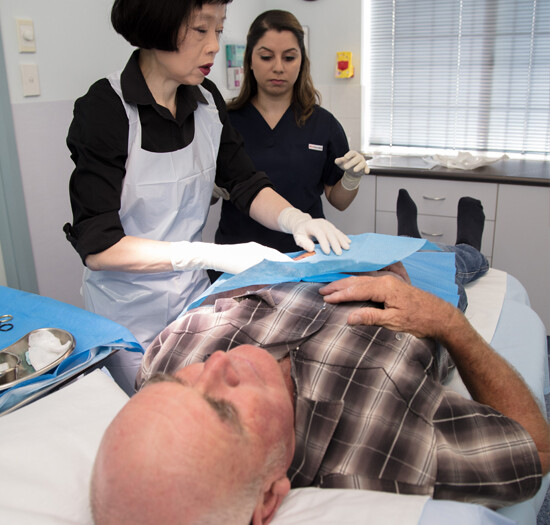
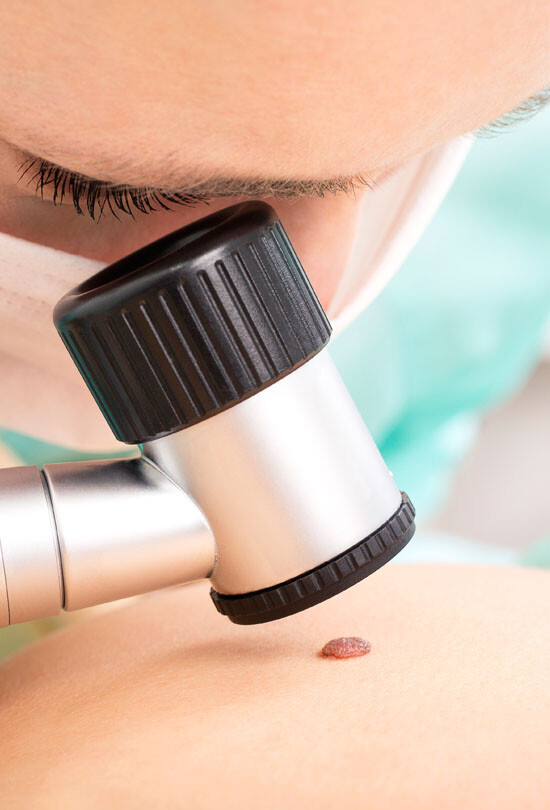
Diagnosis
Pathology results: Your pathology report will contain important information.
Breslow thickness
This is the depth of your melanoma in millimetres and is used to stage the melanoma. The thinner the melanoma the better the prognosis. Less than 1mm is considered a thin melanoma. 1-4mm is in intermediate thickness melanoma.Greater than 4mm is a thick melanoma.
Clark level
This is a number that ranges from I-V to describe how deeply the cancer has penetrated the skin. Clark level V is the deepest level of invasion. Clark levels should not be confused with the staging of the melanoma.
Ulceration
Ulceration is the absence of the top layer of the skin over the melanoma. The presence or absence of ulceration is used in the staging of the melanoma. The presence of ulceration indicates a faster growing melanoma.
Mitotic rate
This describes how quickly the melanoma cells are dividing. This is usually measured as number of mitoses per mm2. The higher the mitotic rate the worst the prognosis.
Surgical margin
The report will describe the presence or absence of melanoma cells at the margins. It will also indicate how close the melanomas cells are to the margin. If there are melanomas at the margin or if the surgical margins are adequate further surgery is indicated.
Lymph node status
In some cases the lymph nodes or glands may be removed at surgery. The number removed and number of nodes with melanoma present will be recorded in the pathology report.
Staging of melanoma
Staging a melanoma provides information on how widespread the cancer is.
Stage 0
At this stage the melanoma is confined to the epidermis. The melanoma has not invaded the dermis where there are lymphatics or blood vessels. It is also called melanoma is situ.
Wide surgical excision is the main treatment.
Stage I
This stage include melanomas up to 2mm without ulceration or up to 1mm in thickness with ulceration.
Surgical removal with wide local excision is the main treatment. Sentinel node biopsy (removal of nearby lymph nodes) may be considered to rule out spread of melanoma to lymph nodes if your melanoma is greater than 1mm in Breslow thickness or thinner melanomas with adverse prognostic factors such as ulceration or high mitotic rate.
Stage II
Stage II melanoma is defined by thickness and ulceration. Tumours thicker than 2mm with or without ulceration and tumours between 1-2 mm with ulceration are classified as stage II melanoma.
Wide local excision is the main treatment. Sentinel lymph node biopsy may be considered to investigate spread of the melanoma to the local lymph nodes.
Stage III
Stage III melanoma is when the melanoma has spread to local lymph nodes or nearby tissues. It can be any thickness.
Wide surgical removal is the mainstay of treatment. Lymph node dissection (removal of all lymph does within the region), drug therapy and radiation are considered.
Stage IV
Stage IV melanoma can be any thickness with metastases (spread) to distant lymph nodes or distant sites such as liver, lung, brain and bone.
Surgery or drug therapies including immunotherapy, targeted therapy, chemotherapy or radiotherapy may be considered.
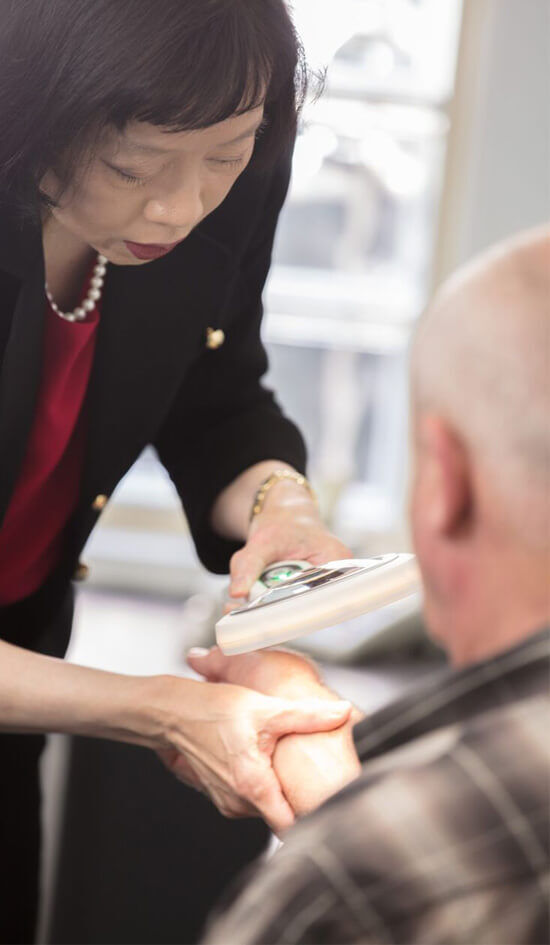
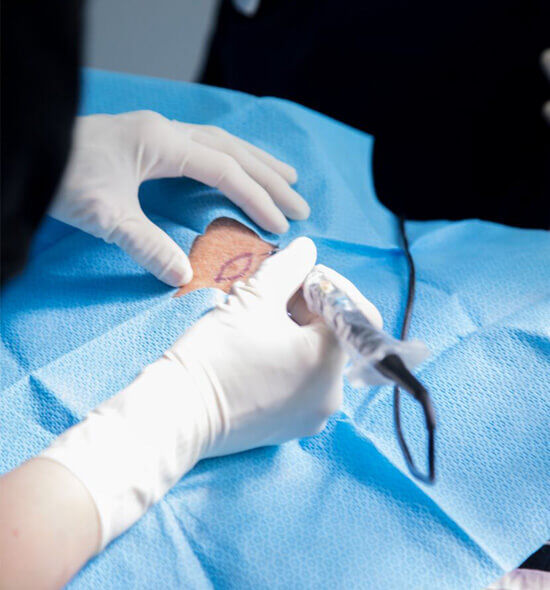
Treatment Options
Surgery
A wide local excision involves removal of the melanoma and certain amount of normal skin around the melanoma. If the wound is relatively small it can be closed with stitches. A larger wound may require a skin graft of a skin flap.
A wide local excision in usually performed under a local anaesthetic. More complex procedures may require a general anaesthetic and a hospital stay.
Sentinel node biopsy
The first lymph node that drains the skin where the melanoma is situation is called the sentinel node. A biopsy of the sentinel node involves mapping the nodes to find the first draining node and then surgically removing it. The sentinel lymph biopsy is usually performed at the same time as the wide excision. The pathologist will examine the node to see if the melanoma has spread.
If your melanoma is less than 1mm this procedure is not recommended. If it is between 1-4mm or thicker than 4mm this procedure is likely to be recommended to you by the melanoma surgeon. If is rapidly growing or ulcerated melanoma it is likely to be recommended to you.
Adjuvant therapies
After the main treatment for melanoma, that is surgery, adjuvant therapies are given to reduce the risk of recurrence in the lymph nodes or to reduce the risk of distant spread.
Targeted therapies and immunotherapies
Targeted therapies are drugs that identify and attack or block specific parts
of the cancer cell. Immunotherapy work by activating the body’s immune system to fight the melanoma cells.
Targeted therapies
These drugs target common genetic mutations such as thre BRAF mutation found in a subset of patients with melanoma. Forty percent of patients with melanoma have the BRAF mutation. BRAF protein is found in all cells and is part of the signalling pathway that encourages healthy cells.
Examples of targeted therapies include:
- Vemuralenib
- Dabrafenib
- Trametinib
- Cobimetinib
Immunotherapy
These include:
- Ipilimumab
- Pembrolizumab
- Nivolumab
- Talimogene
First three are checkpoint inhibitors that ‘take the brakes off’ immune system and enable it to fight the cancer. The last one is an oncolytic viral therapy.
Understanding your risk factors for melanoma
Despite having successful treatment for melanoma, having one melanoma puts you at an increased risk of developing another primary melanoma.
The following factors increase your risk:
- Fair skin
- More than 200 moles in total or more than 10 on your arms
- Previous melanoma or another skin cancer such as BCC or SCC
- Sunburn during childhood or adolescence
- UV exposure such as you work outdoors, used a sunbed or actively seek a tan
- Family history of melanoma
Male and greater than 55 years of age
Sun protection
Sunscreen, sun protections and sun avoidance are all important to decrease your risk of melanoma and are extremely important in the management of a person diagnosed with melanoma.
SPF
This stands for sun protection factor and indicates how much protection a product provides against sunburn. The higher the number the more protections offered. However the level of protection will be affected by the UV levels, your skin type and how well you have applied your sunscreen.
Which sunscreen should I choose?
Look for a broad-spectrum product that filters out UVA, UVB and select a product with SPF of 50+.
How much sunscreen should I apply?
Most people do not apply enough sunscreen to achieve the SPF rating on the tube of sunscreen. Apply the product generously. A teaspoon for each arm and leg and on the front and back of your body. That is a total of 6 teaspoons. A half of a teaspoon for your face, neck and ears. Spread the product lightly and evenly on your skin and allow it to absorb. Do not rub it in completely as you may end up rubbing it off. For spray products hold the nozzle close enough to ensure the spray reaches your skin. Keep spraying until your skin is glistening.
Reapply your sunscreen every 2 hours as it is often wiped away or washed away. When you do reapply the sunscreen you will likely cover parts of your skin that you missed the first time around.
